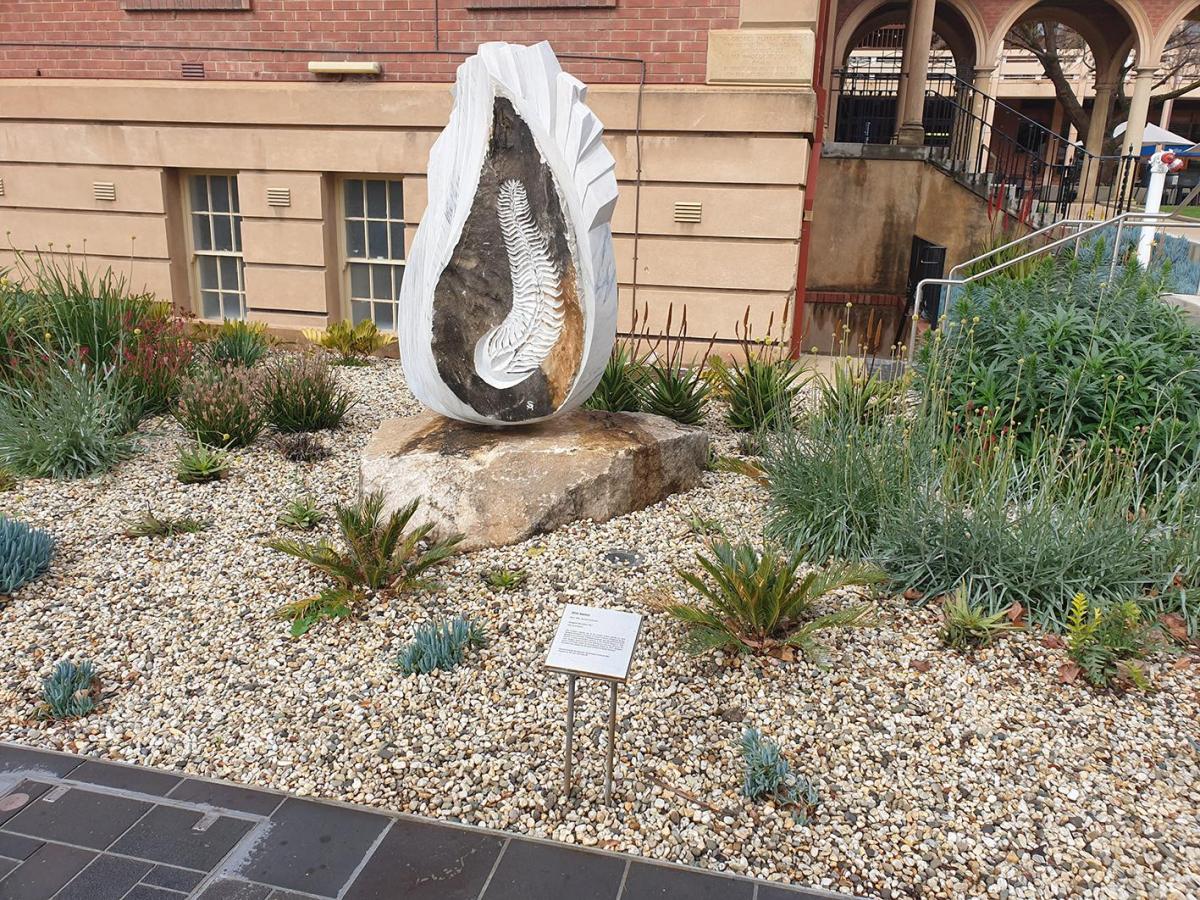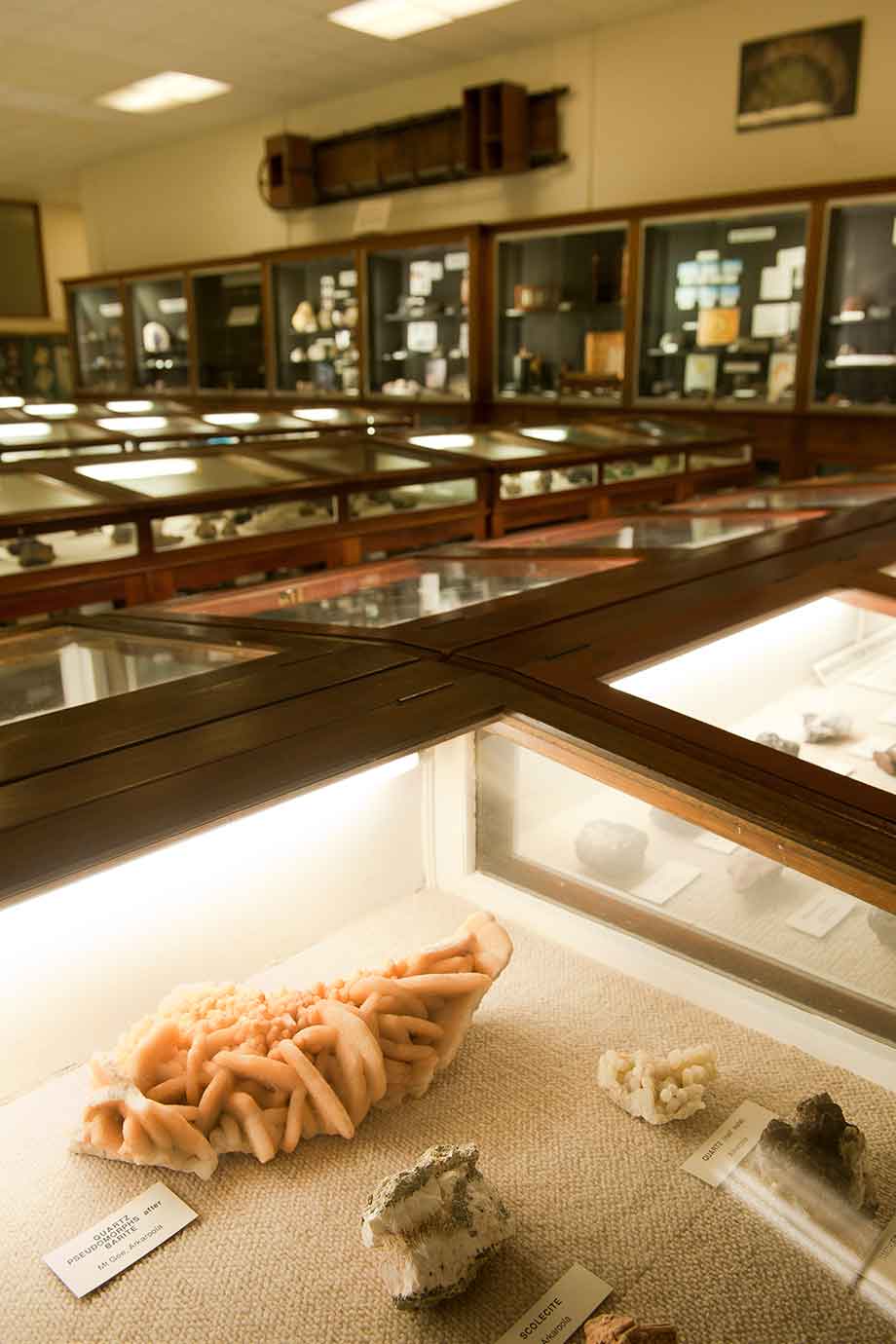Tate Museum
Explore ancient treasures of the Earth.

Located in the Mawson building at the University of Adelaide’s North Terrace campus, the Tate Museum, is home to an incredible collection of minerals, rocks, fossils and specimens that illustrate geological phenomena. The museum opened in 1902 and has been in its current location since the Mawson Laboratories opened in 1952.
These millions-year-old items help us unravel the natural history of our Earth and how it has evolved. Our stunning collections also act as an important resource for science teachers and students of all ages.
Explore a fascinating range of geological specimens and historical artefacts by taking a geological walk around the lawns outside, accessing QR codes as learning resources.
Museum highlights
Meteorites and tektites
Meteorites are strange and beautiful visitors from outer space. The Tate Museum has an outstanding collection of meteorites and tektites from around the world, one of which on display is a 76.9 kg piece comprised of 96% iron.
Asteroids
Approximately 580 million years ago, an asteroid slammed into what is now South Australia’s Gawler Ranges, producing a crater up to 40 km wide that is now known as the Acraman Crater. This display tells the story of the catastrophic event with samples of the ejecta (pictured) now in sediments that became the Flinders Ranges and possibly ushered in the Ediacaran evolution.

Spriggina floundersi by Silvio Apponyi, OAM
Ediacara biota
Earth’s oldest known complex multicellular organisms are called Ediacara biota. The museum holds examples from the Flinders Ranges, some of which are up to 550 million years old. Discovered by Reg Sprigg, a former geology student of the University, they are the starting point of animal life on Earth. The Spriggina floundersi sculpture (pictured) is outside the George Murray building opposite the Victoria Drive pedestrian lights.
Olympic Dam specimens
The ‘Broken Hill’ of the 21st century is Olympic Dam in mid-north South Australia. One of the world’s largest deposits of copper, gold and uranium, it also contains a significant amount of silver. The Museum has many interesting specimens from this giant ore body on display.
Broken Hill minerals
Broken Hill’s massive ore body, which formed about 1,800 million years ago, has proved to be among Earth’s largest silver-lead-zinc mineral deposits. The Museum’s collection features spectacular minerals from the region.
Glow-in-the-dark treasures
Fluorescent minerals show amazing and hidden properties under fluorescent light: press the button to reveal their full glory.
Newly discovered minerals
While good quality iron ore had been discovered in South Australia during the 1840s near Iron Knob, the Australian steel industry only began to flourish from 1915 in Newcastle with ore from the Iron Monarch mine. An incredible 164 different minerals, including six previously unclassified, have been identified from this deposit, with many represented in the museum’s collection.
Visit us
Open:
March to November,
9am to 5pm Monday to Friday
Cost:
Free
Location:
Mawson building
Opposite Adelaide Botanic High School
School visits:
Teacher and school resources
Contact:
Dr Tony Milnes
anthony.milnes@adelaide.edu.au

